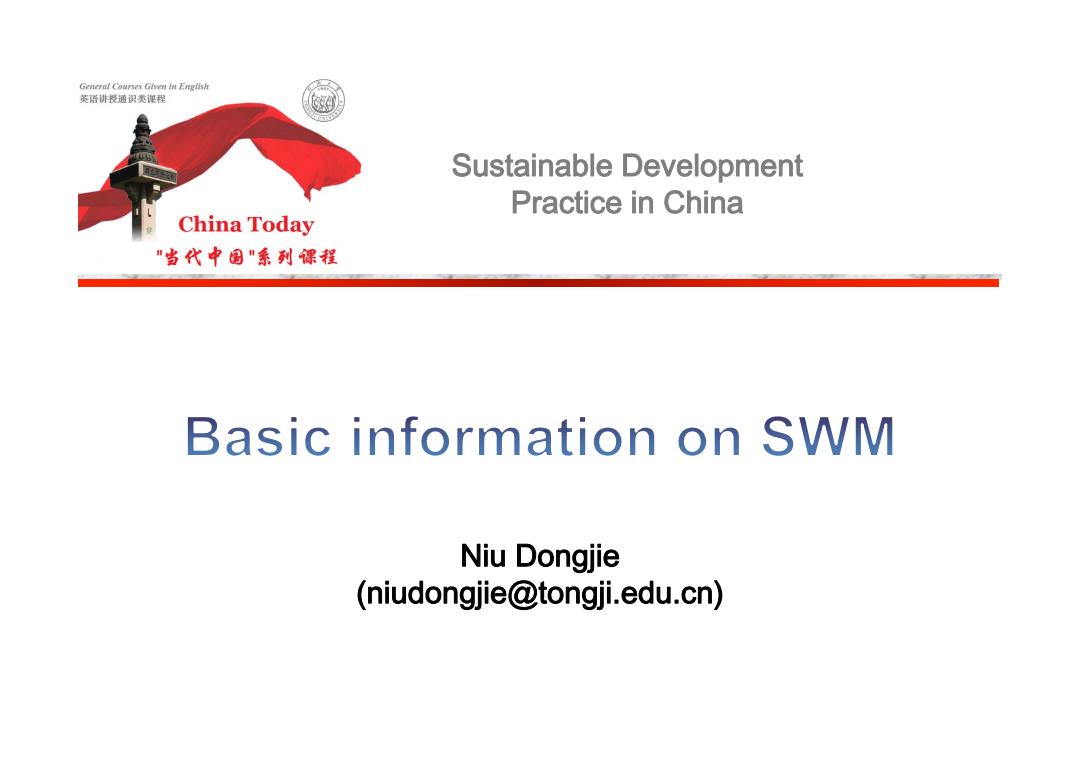
eneral Courses Given in English 英语讲授通识类课程 Sustainable Development Practice in China China Today "当代中国"系列课程 Basic information on SWM Niu Dongjie (niudongjie@tongji.edu.cn)
Niu Dongjie (niudongjie@tongji.edu.cn) Sustainable Development Practice in China
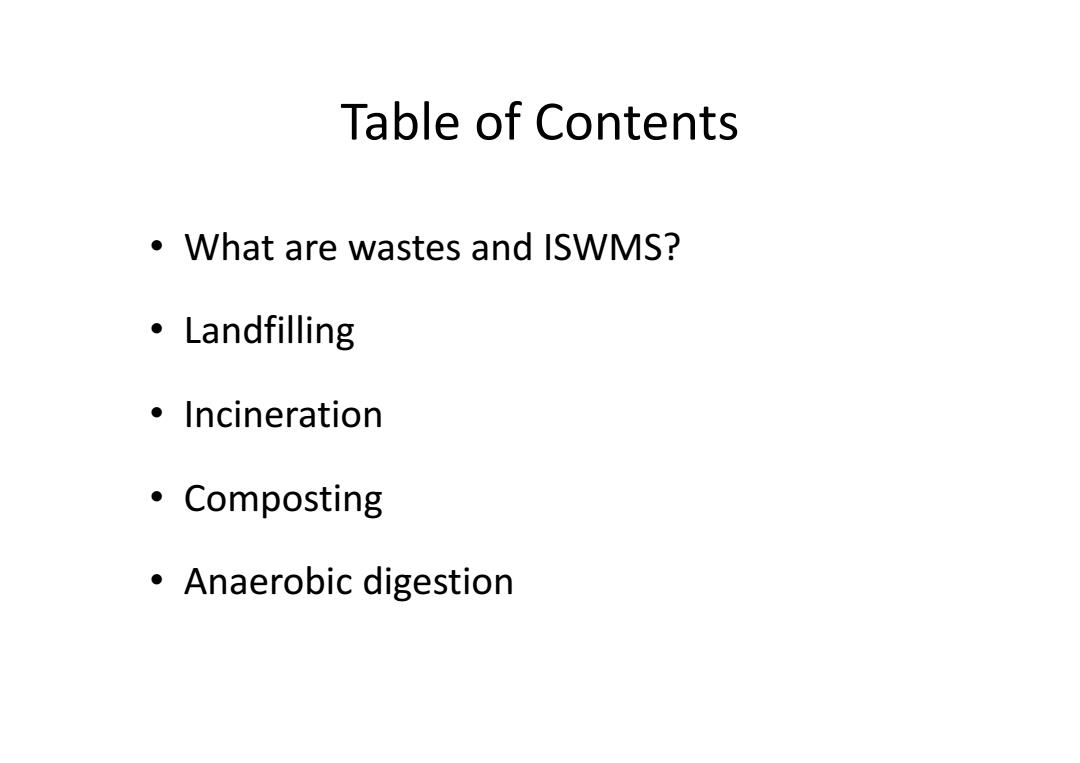
Table of Contents What are wastes and ISWMS? ·Landfilling ·Incineration 。Composting 。Anaerobic digestion
Table of Contents • What are wastes and ISWMS? • Landfilling • Incineration • Composting • Anaerobic digestion
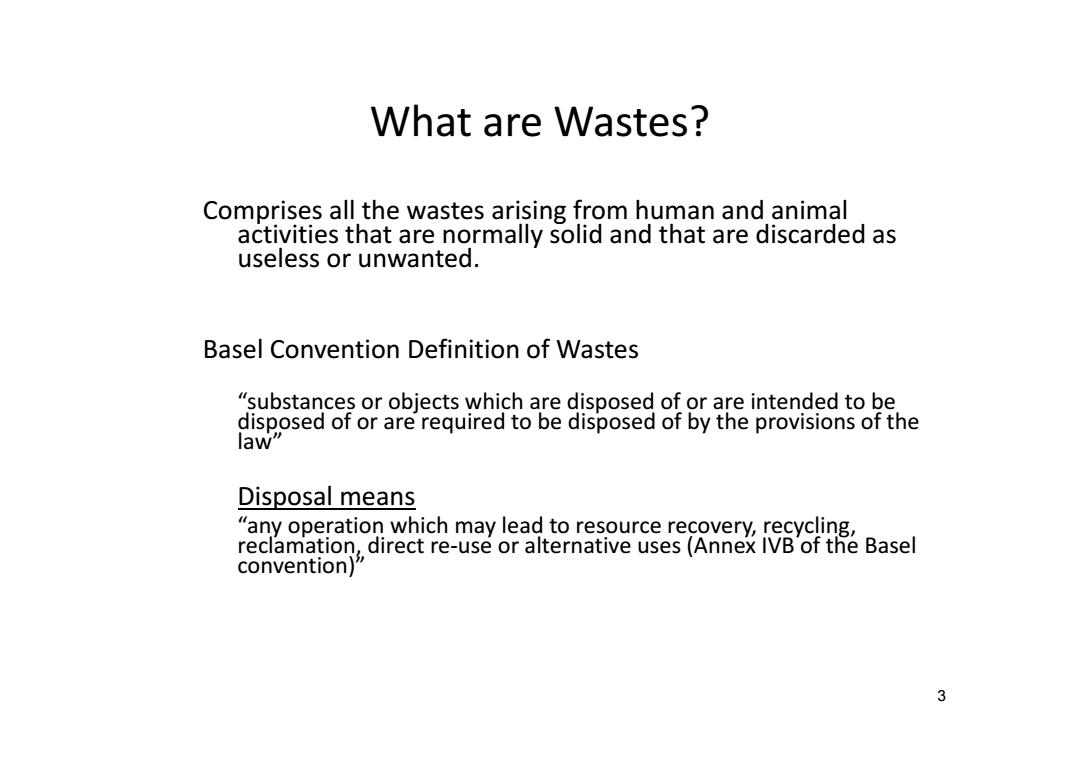
What are Wastes? Comprises all the wastes arising from human and animal activities that are normally solid and that are discarded as useless or unwanted. Basel Convention Definition of Wastes "substances or objects which are disposed of or are intended to be disposed of or are required to be disposed of by the provisions of the law Disposal means "any operation which may lead to resource recovery,recycling, reclamation,direct re-use or alternative uses(Annex IVB of the Basel convention) 3
3 What are Wastes? Comprises all the wastes arising from human and animal activities that are normally solid and that are discarded as useless or unwanted. Basel Convention Definition of Wastes “substances or objects which are disposed of or are intended to be disposed of or are required to be disposed of by the provisions of the law” Disposal means “any operation which may lead to resource recovery, recycling, reclamation, direct re‐use or alternative uses (Annex IVB of the Basel convention)
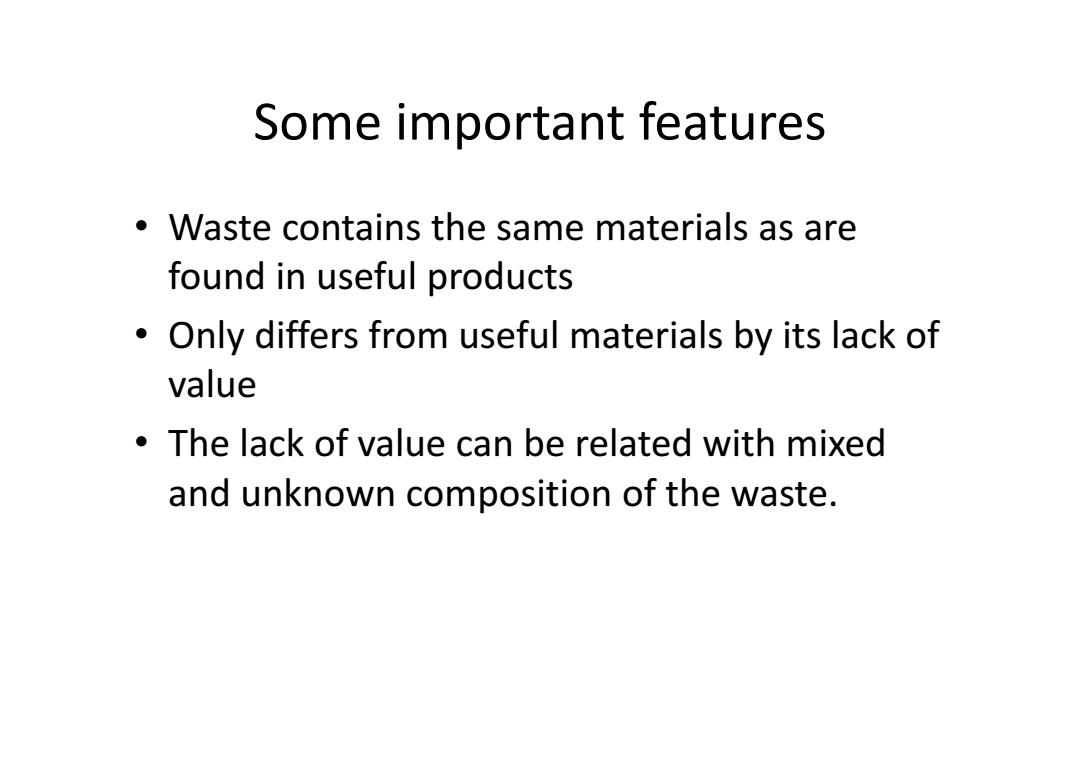
Some important features Waste contains the same materials as are found in useful products Only differs from useful materials by its lack of value The lack of value can be related with mixed and unknown composition of the waste
Some important features • Waste contains the same materials as are found in useful products • Only differs from useful materials by its lack of value • The lack of value can be related with mixed and unknown composition of the waste
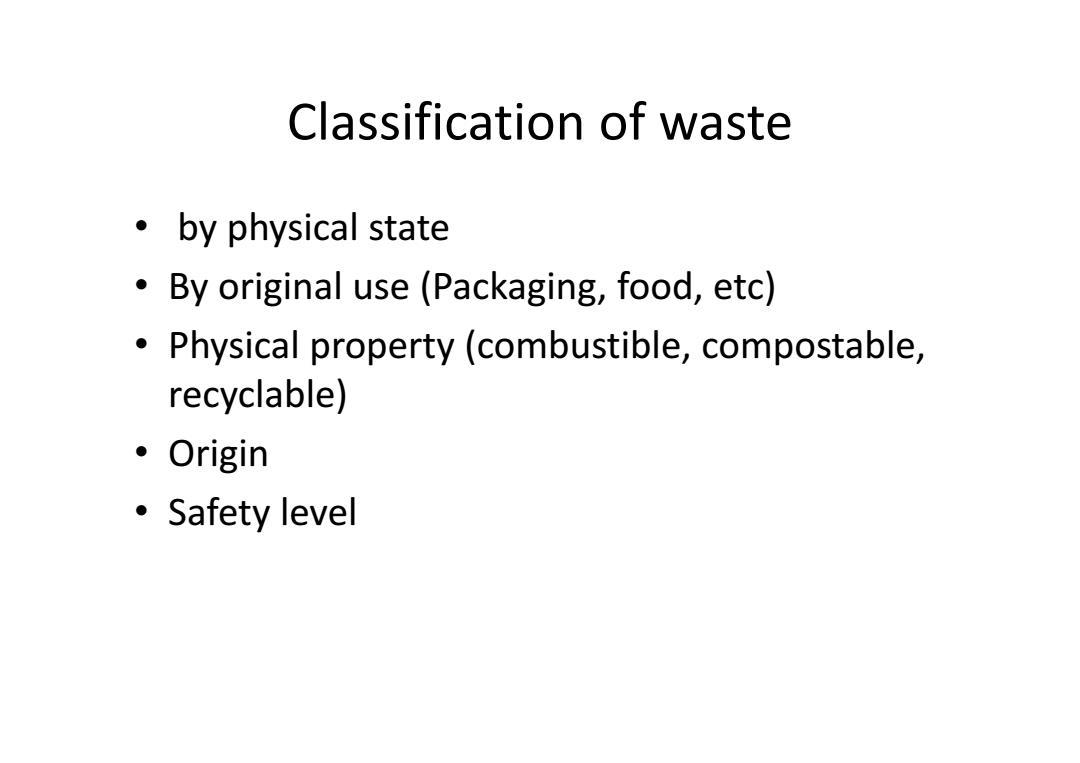
Classification of waste ·by physical state By original use(Packaging,food,etc) Physical property (combustible,compostable, recyclable) 。Origin 。Safety level
Classification of waste • by physical state • By original use (Packaging, food, etc) • Physical property (combustible, compostable, recyclable) • Origin • Safety level
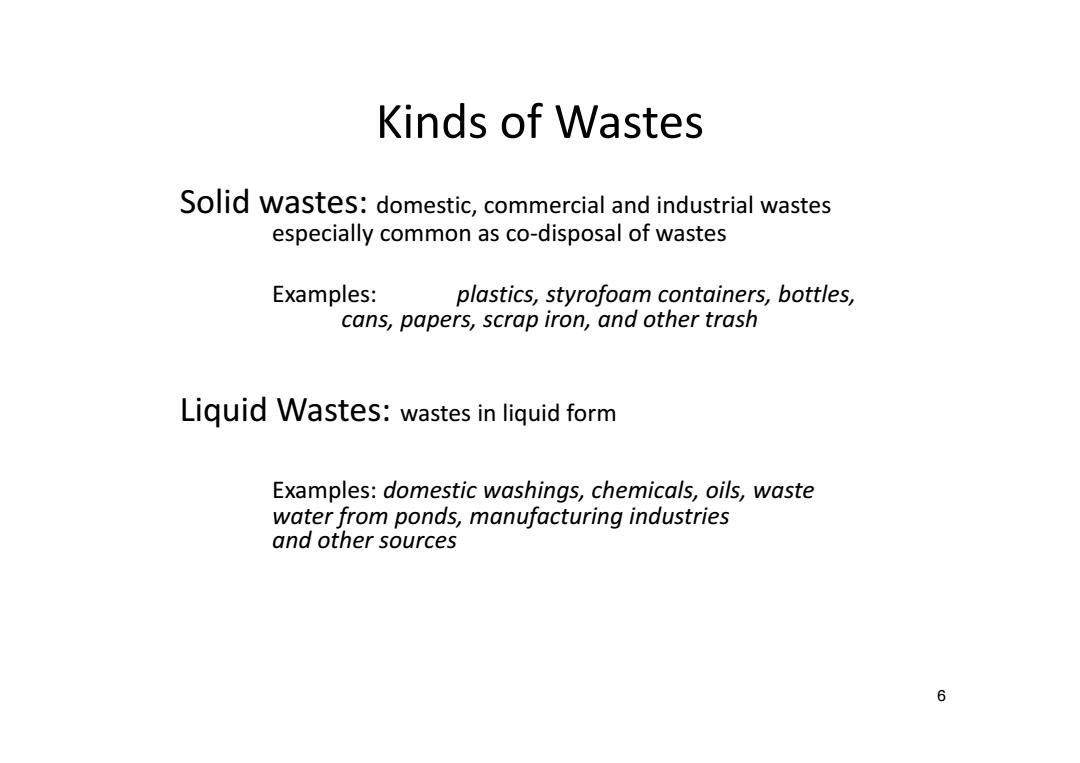
Kinds of Wastes Solid wastes:domestic,commercial and industrial wastes especially common as co-disposal of wastes Examples:plastics,styrofoam containers,bottles, cans,papers,scrap iron,and other trash Liquid Wastes:wastes in liquid form Examples:domestic washings,chemicals,oils,waste water from ponds,manufacturing industries and other sources 6
6 Kinds of Wastes Solid wastes: domestic, commercial and industrial wastes especially common as co‐disposal of wastes Examples: plastics, styrofoam containers, bottles, cans, papers, scrap iron, and other trash Liquid Wastes: wastes in liquid form Examples: domestic washings, chemicals, oils, waste water from ponds, manufacturing industries and other sources
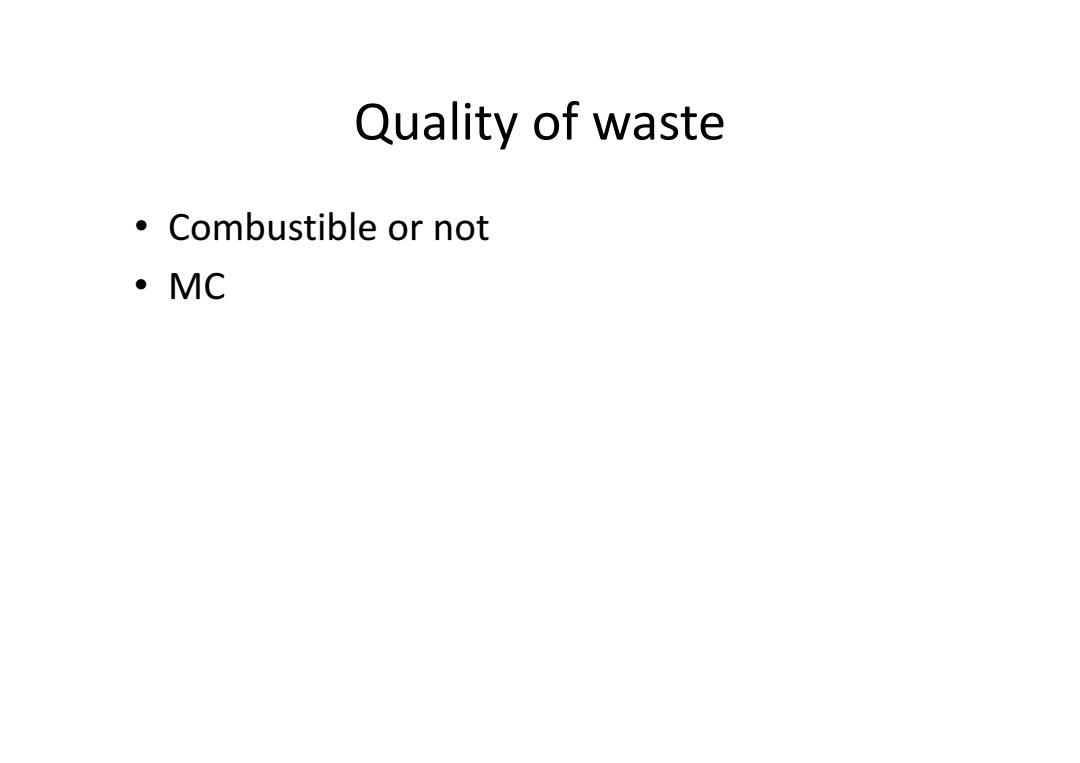
Quality of waste ·Combustible or not ·MC
Quality of waste • Combustible or not • MC

Physical properties of MSW o Moisture content Wet-weight method:M=100 oW initial weight kg oD=weight of sample after drying at 105 。C Dry-weight method:M=100 UNEP
Physical properties of MSW
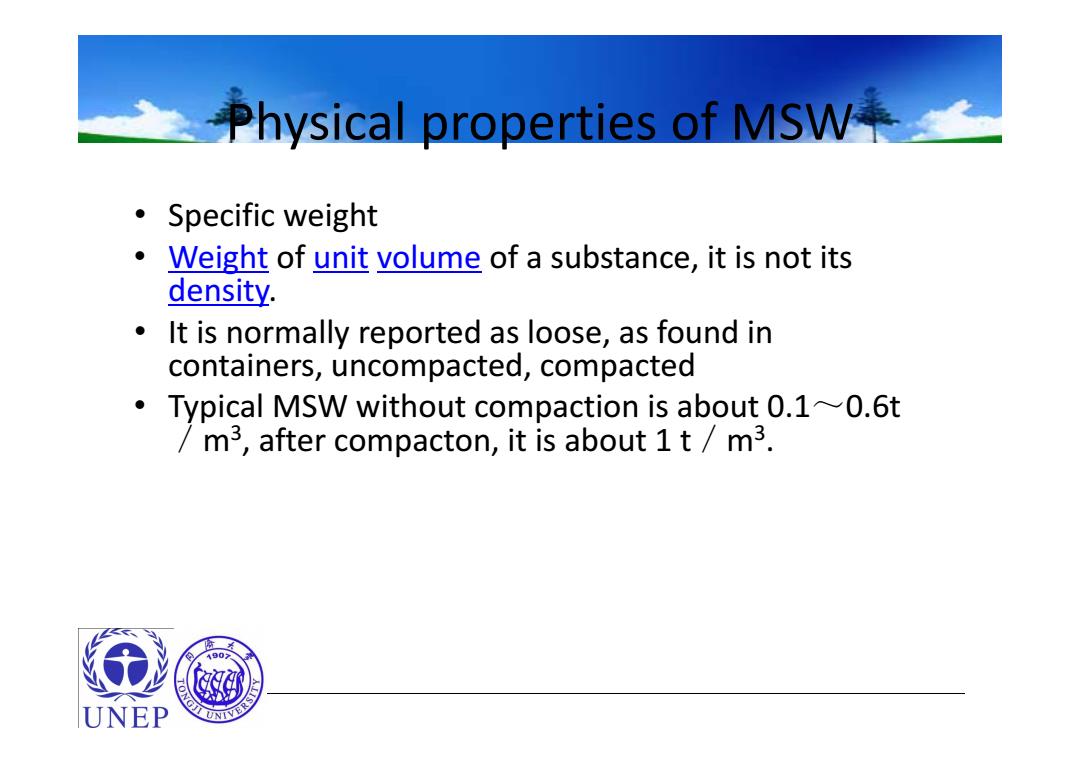
Physical properties of MSW Specific weight 。 Weight of unit volume of a substance,it is not its density. It is normally reported as loose,as found in containers,uncompacted,compacted Typical MSW without compaction is about 0.1~0.6t /m3,after compacton,it is about 1 t m3. 90 UNEP
Physical properties of MSW • Specific weight • Weight of unit volume of a substance, it is not its density. • It is normally reported as loose, as found in containers, uncompacted, compacted • Typical MSW without compaction is about 0.1~0.6t /m3, after compacton, it is about 1 t/m3
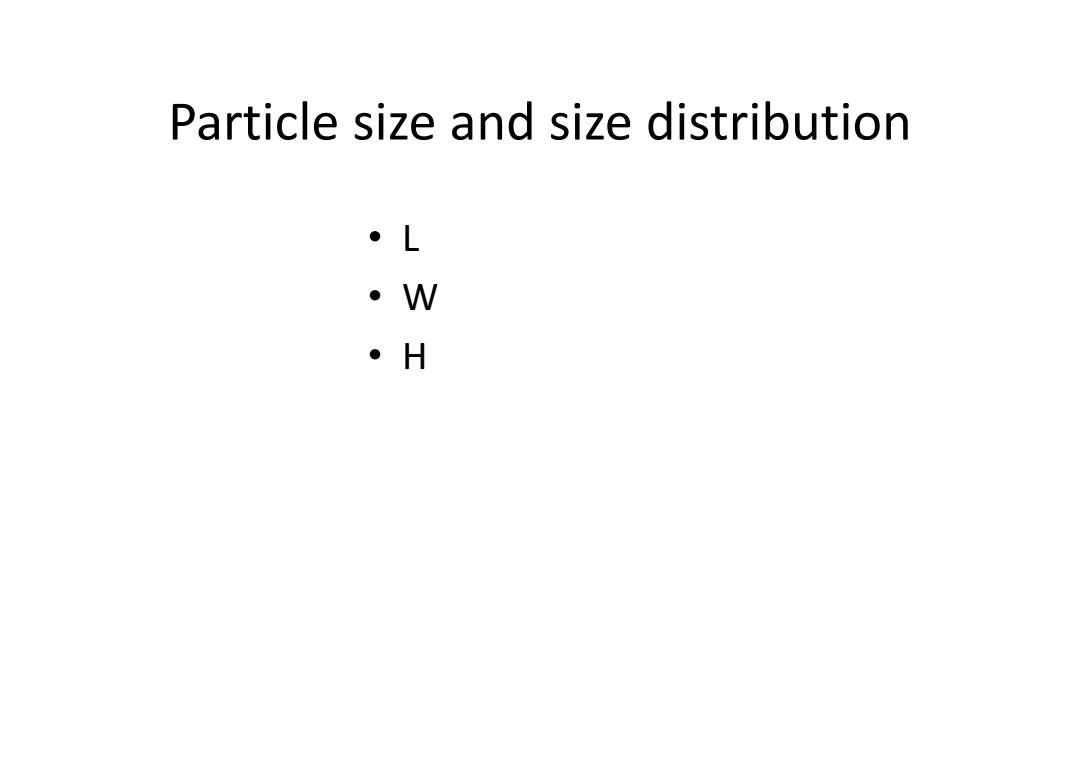
Particle size and size distribution 。L ·W 。H
Particle size and size distribution • L • W • H